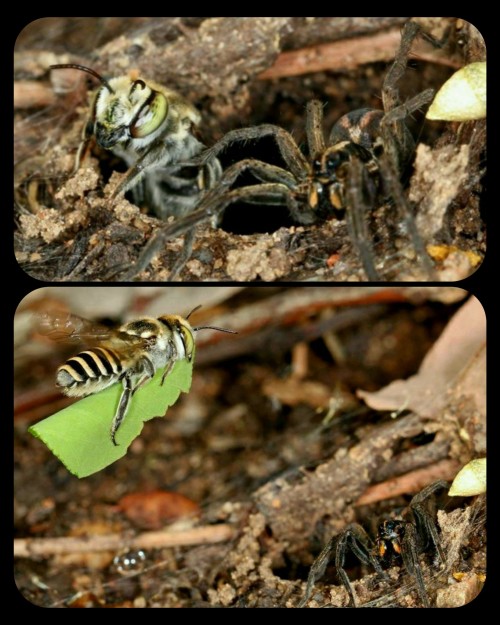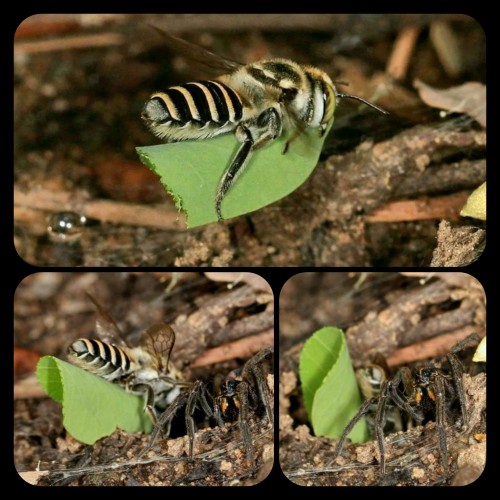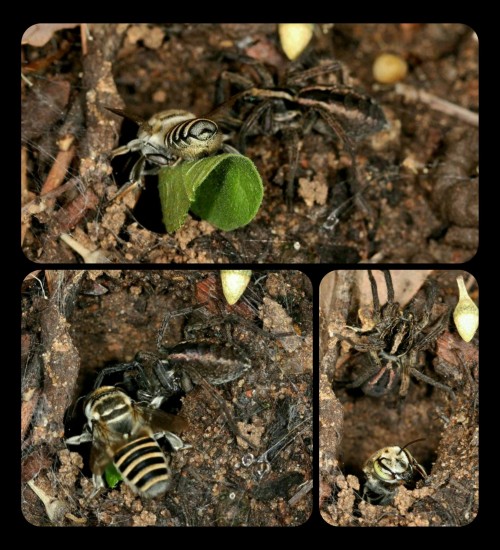This Too Is Yuri - Tumblr Posts
had a dream that I met a wizard and we fell in love and became unhealthily attached to each other so we decided to meld into one single creature together but the process was horrifically slow and painful and most of the dream was us lying in bed holding hands while lesions opened up in our skin and seeped out blue and green fluid and the wizard said "this is going to take a very very long time" and I said "that's ok"
wait till the tumblr girlies find out that in binary star systems sometimes one star will basically eat the other and kill them both - resulting in the most powerful thing a star could ever do in its life.
Off the coast of Australia Macroctopus caught the shark, wrapped all its tentacles around it and soon released it. Most likely, he scraped all the parasites off her.

my father found these deer dead with their antlers tangled together in a field and i will literally never stop thinking about them
Something something the visceral horror GLaDOS must feel after watching Chell for so long, only for her test subject to literally go off the rails and disappear inside of her.
It's such a fantastic reversal of power! In an instant, it changes the genre from Chell's psychological nightmare into Glados's body horror.
This whole time Glados has been creating a psychosexual connection to her lab rat, and now that rat worms its way through her body in a way she can't track.
There's almost an intimacy about the rooms Chell solves being specifically tailored for her to see. They're a dishonest facade, until Chell escapes from the predetermined path and sees what Glados truly is/looks like, and ventures all the way to the heart of her, stripping her bare.
"What if you were a massive mechanical complex and I skittered through your insides and climbed into the heart of your most private and vital organs? And we were both women?"
This too, is Yuri
Coworker: Wild shift today, you were killing it on the line. What makes you move like that? Me, Internally: Tell them. Tell them that when the shift starts, your soul entwines with a militia member in the Yellow Scarves Rebellion during the waning years of the Han Dynasty, and that while the two of you do not speak the same dialect, you feel each other's presence and memories, and resonate within your equal contempt of a system in which your lives are equal to a shaft of wheat in an endless field, cut down without consequence or afterthought, the rage crossing generational boundaries and making you both push with a fire that only fades when you clock out for the day. Me: I drinks a monster energy.
Rare images of a leafcutter bee sharing its nest with a wolfspider:

These photographs were taken in Queensland, Australia, by an amateur photographer named Laurence Sanders.

The leafcutter bee (Megachile macularis) can be seen fetching freshly-cut leaves, which she uses to line the inner walls of her nest. The wolfspider moves aside, allowing the bee to enter the nest, and then simply watches as the leaf is positioned along the inner wall.

After inspecting the nest together, they return to their resting positions -- sitting side-by-side in the entryway to the nest.
The bee seems completely at ease in the presence of the wolfspider, which is normally a voracious predator, and the spider seems equally unfazed by the fact that it shares its burrow with an enormous bee.
This arrangement is completely unheard of, and the images are a fascinating sight to behold.
Sources & More Info:
Brisbane Times: The Odd Couple: keen eye spies bee and spider bedfellows in 'world-first'
iNaturalist: Megachile macularis
CUTE DATE IDEA: go to a medieval torture museum and tell each other which devices you would put each other in

—
My strength was of no concern. I found myself on top her chest. I climbed until her eyes were beneath me. Two fragile lumps of gelatine. One wrong comment and I’d pop them like ripe grapes. My tusks rested a tiny distance from her pupil. My claws forced her lids to stay open. I hinted panic. I found pleasure in anger.
“I won’t let you look at me without respect,” I shouted. Her gaze flickered. I pressed down. My legs were light, my whole body trembled. She could shove me off and kill me. But she didn’t. Somewhere in her primitive synapsid brain a survival instinct had kicked in. Something paralysed her.
I paralysed her.
—
Small sketch I made inbetween editing chapters. Riina and Serva are getting along just wonderfully.



more of my red x blue jock girls agenda
im reading a lot of research about the mycorrhizal network because this is a HUGE emerging area of research and there is so much new stuff coming out its sooooo neat
So basically "the mycorrhizal network is how trees send each other nutrients and help each other" is wrong,
but the main reason people were mad at it—because they thought everything in the ecosystem is selfish and competitive acting for its own interests—is much wronger.
How come?
Well...fungi aren't just a postal service for trees. They have lives of their own! Plants aren't just controlling the mycorrhizal network to send nutrients where they want, they are communicating with the fungus and negotiating the terms of that relationship.
The genetic basis in plants for forming the mycorrhizal symbiosis is old. REALLY old. Like, "before plants even came onto land" OLD. Other forms of symbiosis, like what legumes have going on with the Rhizobia, are using the same genes to do their thing. There's a LOT of genes involved with creating the symbiosis, including some redundancies just to be safe, and we're only just now starting to understand them.
Why so many genes? What are all these genes for? Everything! Communication chemicals, hormones the other partner will respond to, flipping switches in the other partner's genes. There was a lot of arguing over which partner, the plant or the fungus, was "controlling" the partnership, but this question turned out to be total nonsense. Both symbionts have to recognize each other, respond to each other, prepare for symbiosis by adjusting how their genes are expressed, form the symbiosis, and continuously negotiate the relationship by exchanging chemical signals. Both can actively select the partner that offers the best benefits. There's even experiments where it's been shown that if the fungus turns parasitic, the plant will start secreting fungicidal chemicals. (But also the mutualist fungi in the experiment outcompeted the parasitic one when the pots were seeded with both.)
Mycorrhizal symbiosis is an incredibly intimate relationship. Like, the fungus produces special organs that literally grow inside the plant's cells, and the plant is actively participating in allowing this to happen. The plants and fungi have genes for hormones used by the other species, they have soooooo much stuff encoded in their DNA for interacting with their symbionts, it's like, blurring the lines for whether they're even separate organisms. There are SO many chemicals involved in communication between them and we only understand a few of those chemicals.
This is SO MUCH COOLER than if the plants were just using the fungus as a passive conduit to communicate with and support each other. The fungus is actively participating!
We were fools and assumed there had to be one partner that was "in control," but both plant AND fungus have to initiate and to some extent they're each engaging on their own terms! Or maybe it's better to think of them as one and the same organism?
We're also finding out that there's a lot more types of mycorrhizal symbiosis than we thought (at least five) and a lot more variety in how it works.
And that's not even getting into fungal endosymbionts—fungi that live inside plant cells completely instead of having part of them be outside and in the soil. They aren't considered mycorrhizae because they're fully inside the plant cells and not connected with any soil fungi network but they do a lot of complicated things we don't understand and interact with the plant's other symbionts.
Fungal endosymbionts produce a lot of chemicals that are useful to the plants in some way, and it turns out, that a lot of them kill cancer. Seriously, we've gotten a LOT of anti-cancer drugs from these guys. I think it's because they have to bypass the plant's immune system, but they also fight each other/other little guys that get inside plant cells, so they kind of...are part of the plant's immune system?
And what's MORE
Is that plants and fungus aren't the only things part of this system! There's also bacteria that are symbiotic with the plants and fungi! Even the endosymbiont fungi have bacteria that are endosymbionts inside THEM. Double endosymbiosis.
I think I read one paper saying the bacteria use the fungi to get around? Like that's how Rhizobia find their way to the legume roots in the first place? Have to double check that one
not for nothing but i need to make out with a girls cock that's as big as me and i need it right now.

hooked on you








